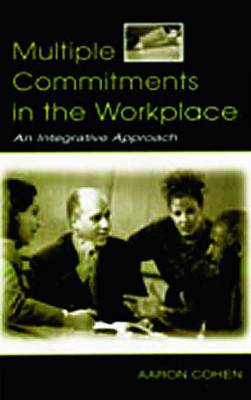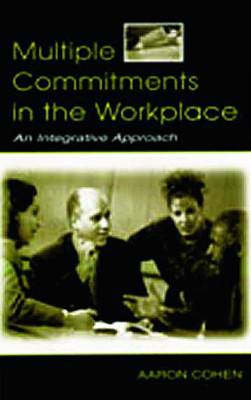
Door een staking bij bpost kan je online bestelling op dit moment iets langer onderweg zijn dan voorzien. Dringend iets nodig? Onze winkels ontvangen jou met open armen!
- Afhalen na 1 uur in een winkel met voorraad
- Gratis thuislevering in België vanaf € 30
- Ruim aanbod met 7 miljoen producten
Door een staking bij bpost kan je online bestelling op dit moment iets langer onderweg zijn dan voorzien. Dringend iets nodig? Onze winkels ontvangen jou met open armen!
- Afhalen na 1 uur in een winkel met voorraad
- Gratis thuislevering in België vanaf € 30
- Ruim aanbod met 7 miljoen producten
Zoeken
€ 109,95
+ 219 punten
Uitvoering
Omschrijving
The growing interest in multiple commitments among researchers and practitioners is evinced by the greater attention in the literature to the broader concept of work commitment. This includes specific objects of commitment, such as organization, work group, occupation, the union, and one's job. In the last several years a sizable body of research has accumulated on the multidimensional approach to commitment. This knowledge needs to be marshaled, its strengths highlighted, and its importance, as well as some of its weaknesses made known, with the aim of guiding future research on commitment based on a multidimensional approach. This book's purpose is to summarize this knowledge, as well as to suggest ideas and directions for future research. Most of the book addresses what seems to be the important aspects of commitment by a multidimensional approach: the differences among these forms, the definition and boundaries of commitment foci as part of a multidimensional approach, their interrelationships, and their effect on outcomes, mainly work outcomes. Two chapters concern aspects rarely examined--the relationship of commitment foci to aspects of nonwork domains and cross-cultural aspects of commitment foci--that should be important topics for future research. Addressing innovative focuses of multiple commitments at work, this book:
*suggests a provocative and innovative approach on how to conceptualize and understand multiple commitments in the workplace;
*provides a thorough and updated review of the existing research on multiple commitments;
*analyzes the relationships among commitment forms and how they might affect behavior at work; and
*covers topics rarely covered in multiple commitment research and includes all common scales of commitment forms that can assist researchers and practitioners in measuring commitment forms.
*suggests a provocative and innovative approach on how to conceptualize and understand multiple commitments in the workplace;
*provides a thorough and updated review of the existing research on multiple commitments;
*analyzes the relationships among commitment forms and how they might affect behavior at work; and
*covers topics rarely covered in multiple commitment research and includes all common scales of commitment forms that can assist researchers and practitioners in measuring commitment forms.
Specificaties
Betrokkenen
- Auteur(s):
- Uitgeverij:
Inhoud
- Aantal bladzijden:
- 372
- Taal:
- Engels
- Reeks:
Eigenschappen
- Productcode (EAN):
- 9780805843682
- Verschijningsdatum:
- 1/01/2003
- Uitvoering:
- Paperback
- Formaat:
- Trade paperback (VS)
- Afmetingen:
- 152 mm x 231 mm
- Gewicht:
- 494 g

Alleen bij Standaard Boekhandel
+ 219 punten op je klantenkaart van Standaard Boekhandel
Beoordelingen
We publiceren alleen reviews die voldoen aan de voorwaarden voor reviews. Bekijk onze voorwaarden voor reviews.











